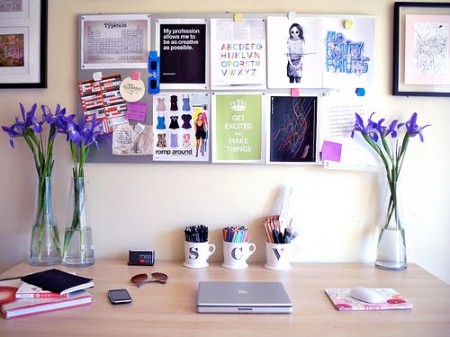Every home I am called into requires creativity, patience and a bit of quick thinking on my part, but one thing I know I will come across in the majority of homes is out of control paperwork. I run into mounds and mounds of papers everywhere -- stacked on top of the refrigerator, tucked alongside the television, piled high on the kitchen table, hanging in grocery bags from door knobs, scattered across the living room sofa, tucked into dresser drawers and laying on every available surface. The papers I come across are all kinds and they’re often all piled together -- junk mail, old financial papers, christmas cards, bills, bank statement, grocery receipts, restaurant receipts, medical bills, coupons, school papers, recipes, magazines (often magazines with organizing tips) and just about anything you can imagine.
Most of my clients keep all of their papers for fear of losing one which may be important. Ironically, with paper everywhere, it is impossible to locate the one they may want or need.
And if you don’t know where your important papers are, you might as well not have them at all, right?
If you can relate to at least some of that, you have certainly been in a situation where you needed a specific paper but couldn’t find it. Anxiety builds exponentially for every second spent rifling through the various papers in your home. It’s a terrible feeling. And while filing may seem dull, what it does is eliminate anxiety on the back end. No more hunting for your auto insurance policy, or your passport, or that very important tax document. Filing is not about putting things away, so much as it is about retrieval. At the end of the day, it is about eliminating unnecessary anxiety.
But before I tackle the stacks that may exist in your home already, I want to talk about new paperwork, that is, the paperwork you bring into your home on a daily basis. After you develop new habits for the new papers, you can then start to tackle some of the pre-existing stuff.
-- Junk Mail. Bring your mail into your home and head straight for the trash can or recycling bin. Toss all the junk mail immediately. Keep the rest. Do this every day. Make it your pattern and I guarantee you will start to notice a difference in the mess in your home.
-- Receipts. If you are not self-employed, you don’t need 99% of the receipts I find in homes. I constantly come across receipts from Starbucks, Walgreens, Giant Eagle, Target and Applebees, to name just a few. Not self-employed? You can’t write off that dinner; thus you don’t need the receipt. Toss it. Burn it. Torch it. Line your cat’s litter with it because you don’t need it. And you never will. [If you are considering returning something -- say a new pair of jeans -- keep the receipt with them. Once you remove the tags and wear them, you can’t return them, so you can get rid of the receipt right away.]
-- Bank Statements. If you are reading this post, you are on-line. At least consider going paperless. Instruct your bank to email your statements to you monthly. You can check them on the computer and you don’t have to worry about the papers building up. Plus, you don’t have to worry about how to dispose of papers with important account information, something that is a major stumbling block for many.
The above tips are simply geared to eliminating papers and I know you’re asking, ‘Okay, smarty-pants, what about the papers I do need?’ Fair enough.
After you toss the junk mail and after you dispose of your unnecessary receipts, you are still bringing paperwork into the house, probably daily. The papers you may need or want to keep fall into two really basic categories -- financial and personal.
You’ll need two boxes. You can get decorative bins made of canvas or wood or anything you like, but if you need something fast and cheap, use a cardboard box. [For this purpose, I often use cardboard bankers boxes, which can be purchased at any office supply store.] Dedicate one box for personal papers and one for financial.
-- Christmas cards, birthday cards, magazines, catalogs, recipes, etc. are dropped into the personal box. If you have kids, you may want to put their school paperwork here, as well as any drawings and paintings they bring home for you.
-- Then all of your household bills, car papers, insurance policies and forms, investment and 401k statements, medical bills and so on can be placed in the financial box.
This is a really basic first step using two very broad, simple categories. I’ve suggested these as a deliberately simple starting place, a place where you begin to have an idea of where things are if you need them. Once you get in this routine, you can think about fine-tuning your system, creating sub-systems (perhaps a box dedicated just to the kids, or one dedicated to auto papers, you get the idea.) As with anything, new habits are made in tiny, incremental steps.
If you’re already drowning in papers (as described above), these tips should help you keep those piles from growing, which is a huge step. First, we have to arrest the development of the overwhelming paper: next time, I’ll tackle what to do with the paper which is already there.
 Wednesday, January 25, 2017 at 10:03AM
Wednesday, January 25, 2017 at 10:03AM  Jody |
Jody |  Post a Comment |
Post a Comment | 